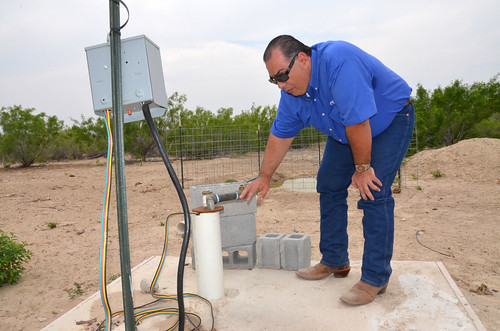
Despite the ongoing drought in part of Texas, there are always people who want to get into the cattle raising business. A growing segment of these new beef producers are non-traditional small-tract landowners, such as Jorge Espinoza of Laredo.
Espinoza just purchased his first 50 acres, and he quickly learned that if he was to be successful, he needed expert advice.
Through word of mouth, Espinoza heard about USDA’s Natural Resources Conservation Service (NRCS), an agency that works with farmers and landowners to implement conservation on private lands.
“If you really want to know something about what you want to do, just go with these people. They’ll help you out,” Espinoza said of the technical assistance NRCS offers.
He said that soon after he visited the local NRCS field office, agency employees were on his mesquite- and cactus-covered land advising him about how to improve his soils and grasses, and explaining the benefits of cross fencing for rotational cattle grazing.
“Right now, when you go out there it is almost like a desert,” Espinoza said of his land. Implementing conservation practices, such as cross-fencing, will help create a more diverse plant base and healthier soils that can support those plants better.
To map out how to accomplish his long-term goals, Espinoza worked with NRCS to create a conservation plan. That’s when Espinoza found out that he qualified for assistance through the USDA StrikeForce for Rural Growth and Opportunity initiative, and through it, would be able to install a solar pump on an existing water well. The new pump eliminated his need to pump water from the well with a generator, saving energy and money.
“These StrikeForce initiative funds provide a better opportunity for these small limited resource producers to get funded,” said Flavio Garza, NRCS district conservationist in Laredo. It can be hard for smaller farmers and ranchers to get started in the business because of the financial capital needed to improve their lands.
Long term, Espinoza imagines his 50 acres divided into multiple pastures to allow him to rotate his livestock on land covered in lush forages.
“In the future, I also see a more close relationship with this office for more advice,” he said.
The USDA StrikeForce initiative addresses high-priority funding and technical assistance needs in rural communities in many states, including Texas. It provides an opportunity for NRCS to work with underserved landowners to determine how to best leverage available financial assistance to address their natural resource concerns, with an emphasis on historically underserved communities in rural counties with persistent poverty.

